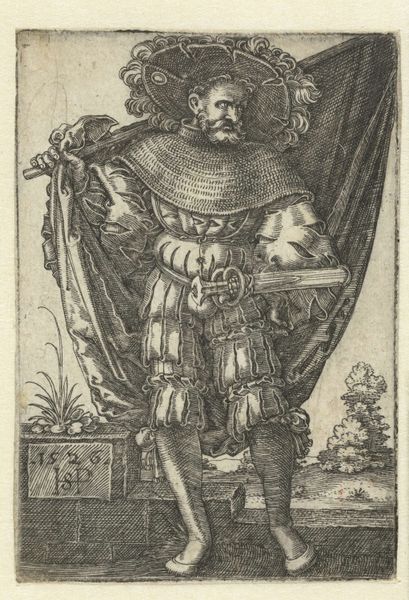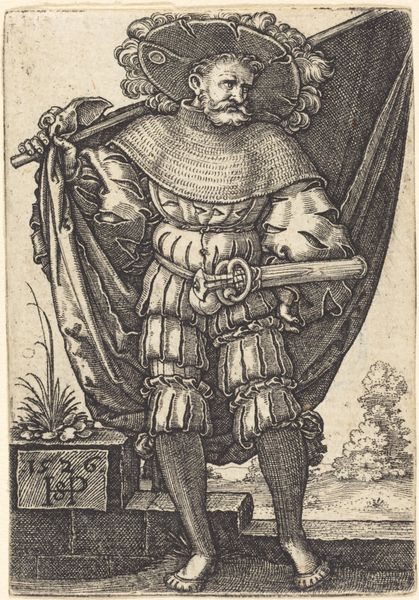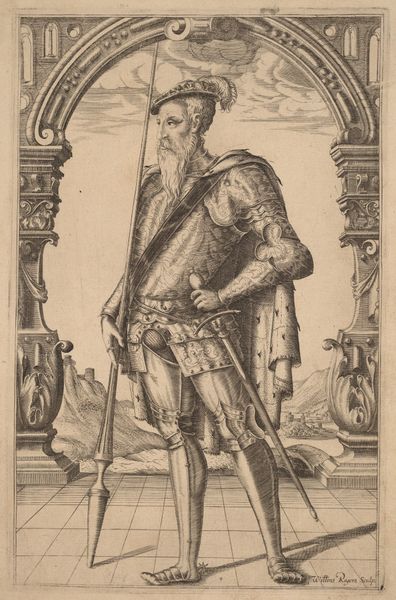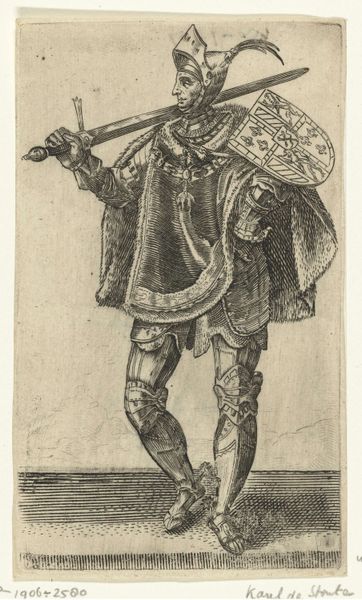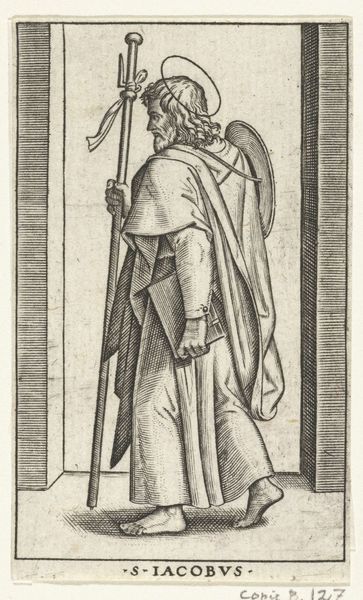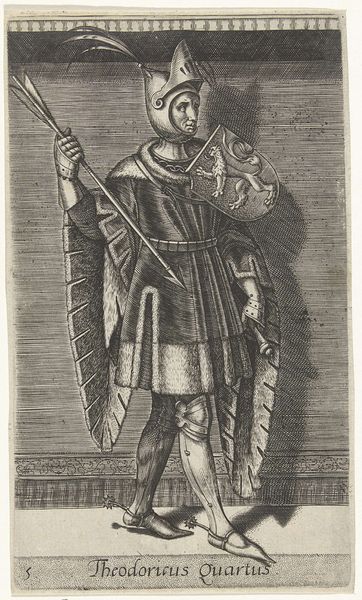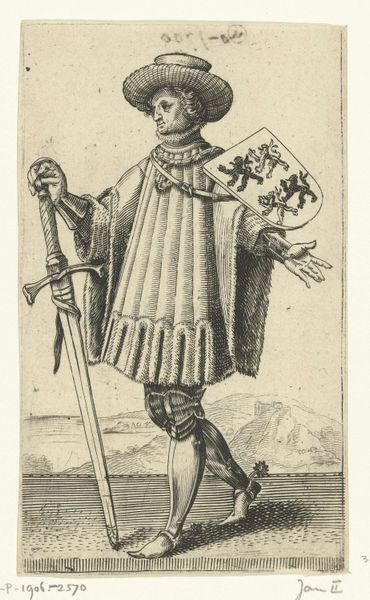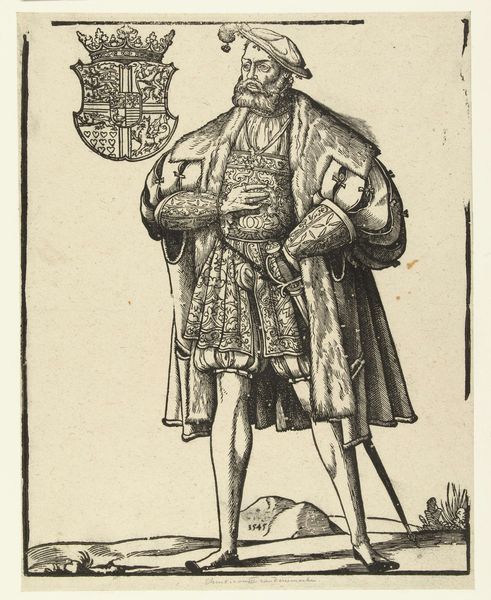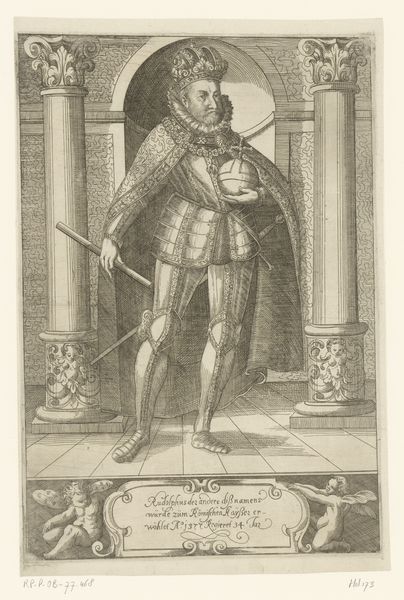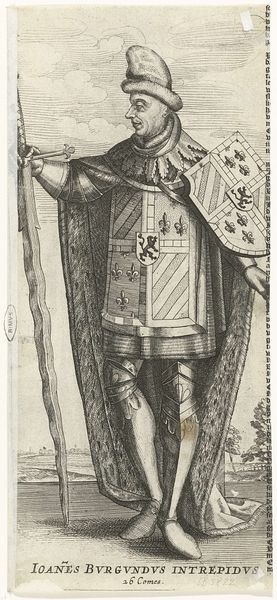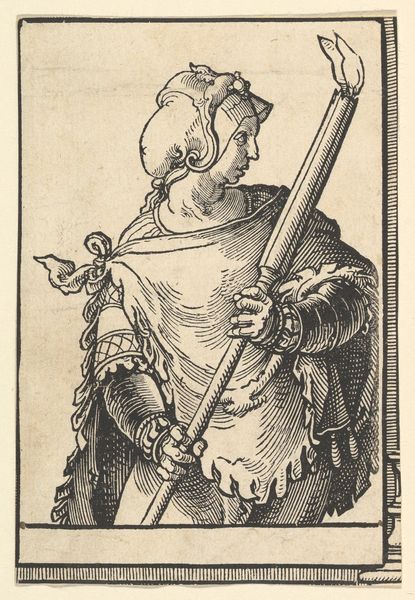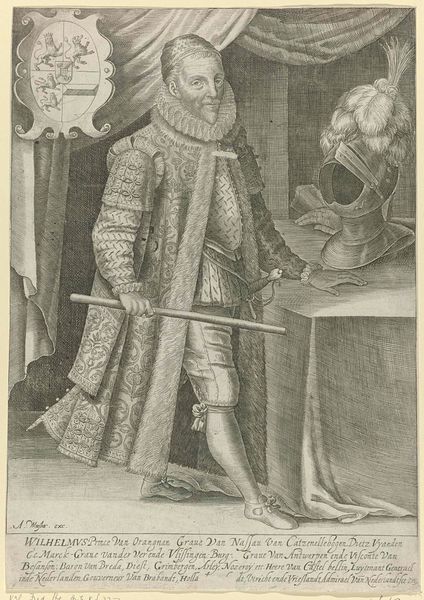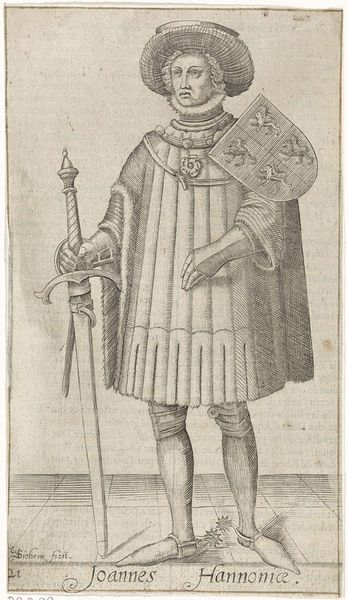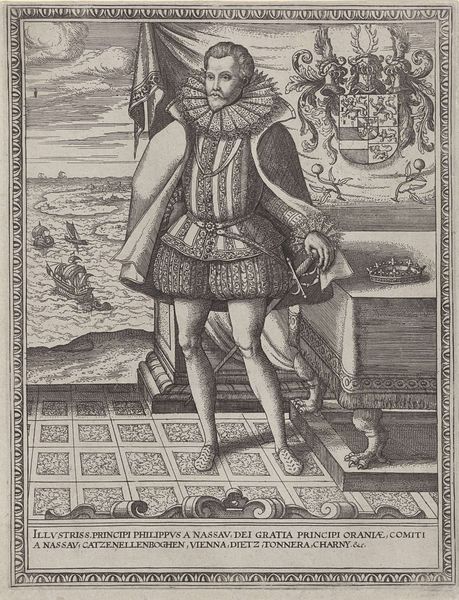
drawing, print, engraving
#
portrait
#
drawing
#
pen drawing
#
mechanical pen drawing
# print
#
pen illustration
#
pen sketch
#
old engraving style
#
figuration
#
11_renaissance
#
history-painting
#
northern-renaissance
#
engraving
Dimensions: height 72 mm, width 51 mm
Copyright: Rijks Museum: Open Domain
Editor: This is Sebald Beham's "Vaandeldrager," created in 1526. It's an engraving, so it has a very graphic, almost stark quality to it. The level of detail in the figure's clothing is impressive. What's your take on this piece? Curator: It is the process by which this image was created that interests me most. This is not just an image; it is the result of labor, and specifically, the highly skilled labor of an engraver working within a complex system of artistic production and distribution in Renaissance Germany. Editor: So you are not interested in who this standard-bearer may have been or what the drawing represents, just that someone worked hard to create it? Curator: I'm interested in the socio-economic context. Engravings like these were commodities. Beham, like other printmakers, was part of a burgeoning market. This image, multiplied and disseminated, played a role in shaping perceptions of military figures and civic pride. Look at the detail—not just artistic flair, but time spent, expertise deployed to create a desirable product for the market. Consider too, how the print medium itself democratizes image ownership, moving art beyond solely wealthy patrons. Editor: I see what you mean. The printmaking process allowed for wider consumption. How would the average person at the time use or see it? Curator: These prints were often collected, pasted into albums, or even used to decorate everyday objects. They were part of a visual culture that was becoming increasingly accessible. Editor: That gives me a completely different perspective. It's not just about the artistic skill; it is about its impact and democratization, how this process made art accessible and changed cultural consumption! Thanks. Curator: Indeed! It challenges us to consider not just what we see, but how it was made, circulated, and consumed, making "art" not just high art, but deeply connected to broader labor.
Comments
No comments
Be the first to comment and join the conversation on the ultimate creative platform.
